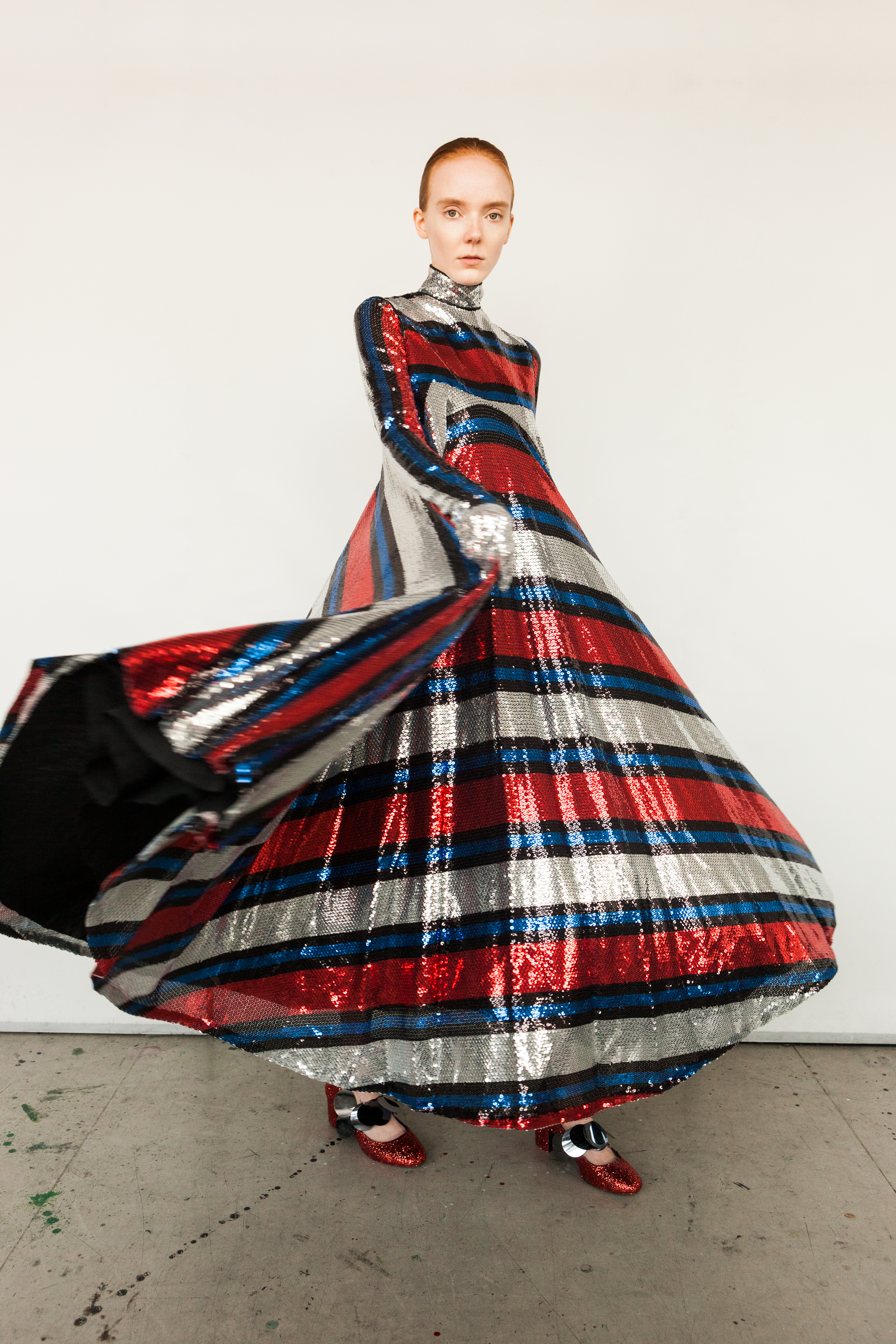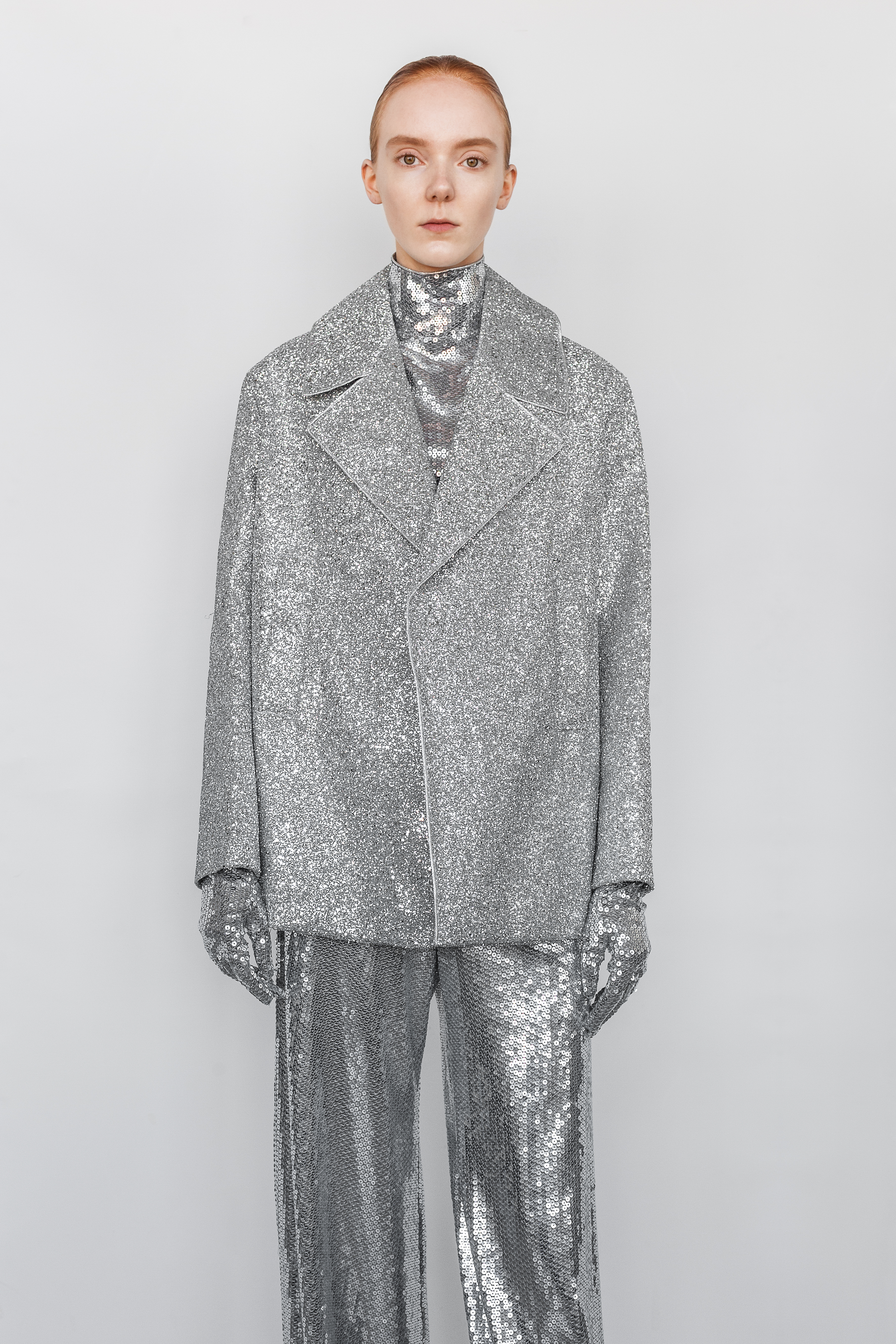Weekly Bubbling: Anna Isoniemi

Anna Isoniemi, a designer chosen to participate in the Hyéres competition, enjoys getting absorbed in background research. For her, it is important that all aesthetics have a thought behind them.
The collection you designed at Aalto University was recently chosen for the finals of the Hyéres competition. How are you doing now?
I’m doing well, thanks. I just got home from the Hyéres festival in France, and everything went really well. The weeks were busy, and the collection raised a lot of interest. The festival includes three shows in three days and a presentation to the jury. There is also a showroom presenting the collection to the press. This was all prepared over two weeks before the festival. It was quite a bootcamp. Luckily I was able to prepare myself for the fact that one must focus on these days. There are so many opportunities to make use of. I was able to make contacts that hopefully will become useful in the future.


What was the best bit?
It was nice to have people give me personal feedback. It was also great to have many people say that they would like to wear my clothes. That itself is a great basis for all designing: to make wearable clothes. It also gave me confidence in what I do. I realized that I have a strong vision: on one hand it’s very colourful, but on the other hand very simple and clean. As a person I’m very specific and quite serious, but I’m also crazy and unexpected. In a way I justify my own personality through my work.
Your collection is made of sequins. Why sequins?
My topic was futurism in the 60s and race cars. The metallic surface of the cars inspired me to use the shiny sequins as a base for the prints. A 60s sequin dress from the Geoffrey Beene collection was a major inspiration for me. I did a lot of research and experiments with pressing, which is most commonly used in sportswear, and I realized that sequins are my material. I wanted to get rid of everything that is cold and harsh, so the prints had to be as sharp and simple as possible. All elements of the collection had to be very stripped-down and minimalistic, which is slightly questionable when it comes to sequins.
Why race cars and the 60s?
I grew up surrounded by these cars, and as a child I used to play with a race car card game, so the subject felt natural and dear to me. The inspiring colour tones and patterns were easy to find. The topic also has that sense of dynamics and speed that I wish to bring to womenswear. My mother is a textile artist, and our home has always had big 60s style prints. I like the minimalism but also the strength in them. There is this strong femininity that has nothing girly in it. Vuokko Nurmesniemi, for example, has interesting works.


Why did you decide to study fashion?
Reading and thinking is natural for me, and I have tried lots of different art forms, but none of it has felt like me. In the fashion exams I immediately noticed that this is the way I can express myself. The design process of the collections is very visual, but also includes tons of research. This combines thinking and designing. I like the entire process, even those unpleasant moments when you have to make dozens of prototypes. I have seen that there is no shortcut to a successful outcome. You just have to do the work.
What is the value behind the initial idea behind the collection?
I’m aware of the fact that I sometimes go quite deep. But if I’m doing something I want to know a lot of it. I don’t want to make decisions simply based on what I like. All visuals and aesthetics must have reasoning behind them. Obviously everything has been invented and done already, but with background research one is able to take anything into a new direction. Once you know the history you are able to perceive the future.

Where would you like to see your clothes worn?
This might be a fantastic dream, but I do see them as something you can actually wear. I want to rethink the idea of everyday wear. The basis of the bag featured in the collection is originally from a plastic bag. For the trouser suits, the idea obviously is relaxation and sportiness. It would be fun to take them to a rugged everyday environment, to a supermarket rather than a red carpet. I’m not making showy festive wear.


Which skill do your classmates have that you are jealous of?
The process of experimental and three-dimensional formulating, breaking the borders of silhouettes. I admire those testing the limits of the forms of a clothing item. It is not one of my strengths.
Where will you be in ten years?
Working abroad, hopefully. I’m interested in starting my own label, but I would rather see myself working for a company. I would love to work in Italy or somewhere else in Europe. My goal is to finish my Master’s Degree next spring. In my MA Collection I will continue these ideas of femininity and that specific sharpness.
Suvi Järvelin wanted to ask you this: How would you change the fashion scene in Finland, should you decide to stay?
I would add more financial support as well as appreciation, so that the designers would not go abroad. In Sweden, for example, the companies support the smaller brands, and they are sponsored and helped from the beginning. I wish Finns would see the potential that has been created in the fashion field lately. It is revolutionary to have so many Finns in Hyéres, for example. This potential is unique, and there is momentum towards making use of all this visibility.
Who do you admire and why?
I admire Sofia Okkonen, who graduated in Photography with a Master’s Degree and represented Finland at last year’s Hyéres festival. She interprets images in a great way through different people. The relationship between the image and the person is intimate and interesting. There is a clear dialogue between the colours, and she has a very subtle yet surprising take on femininity.
What would you like to ask her?
What is the perfect lighting?
